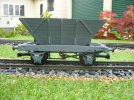Asbestosis is a killer, without proper PPE, it is very dangerous, and you have to be licensed to dispose of it, heavy fines for dumping, or even taking to the tip without informing them.
Learn how to dispose of asbestos safely and legally. The Waste Group offers licensed asbestos collection and disposal across the UK.

www.thewastegroup.co.uk
Goodness, without taking the thread away from its original meaning, did you read my original post ?.
Asbestosis is a killer, AGREE (but so are cars, sniffing glue and there are different levels of the stuff)
without proper PPE, (100% AGREE, thats what I said in my post, FFP3 mask used (TICK) )
it is very dangerous, (AGREE,)
and you have to be licensed to dispose of it (Disagree, if you look at the legislation this applies to Waste companies, Commercial contractors, trademen etc)
heavy fines for dumping (AGREE, for commercial operators, but not for the HIDIOUS critins of life who FLY TIP due to LAZYNESS)
or even taking to the tip without informing them (AGREE, The local council were very helpful, and even "as I said in my post" provided very good bags to bag the substantially coated panels)
While I commend you for using a
YELLOW AND BLACK warning sign in your post and a link ( from a "company" who will charge you to do it and have to take extreme precaution for personal/employee insurance and protection and Duty of care, I have spoken to someone at church that does disposal for a living on the subject ) and for correctly identifying it as a substance to be wary with . The civil servants dont help, who while doing a great job are often control freaks that just want to put all humans in boxes while turning a blind eye to the serious un policeable issues of the world, no wonder this county produces nothing of worth anymore on any scale apart from 1000s of bureaucrats and AI software creators.
A link to the Three different types of asbestos there are would have been a good start too, this is the company I used to initially identify the product I was dealing with back in 2020 !
Types of asbestos | Armco Asbestos Surveys
AND PS ! DONT USE YOU 3d PRINTER TO MAKE A FRISBEE !







